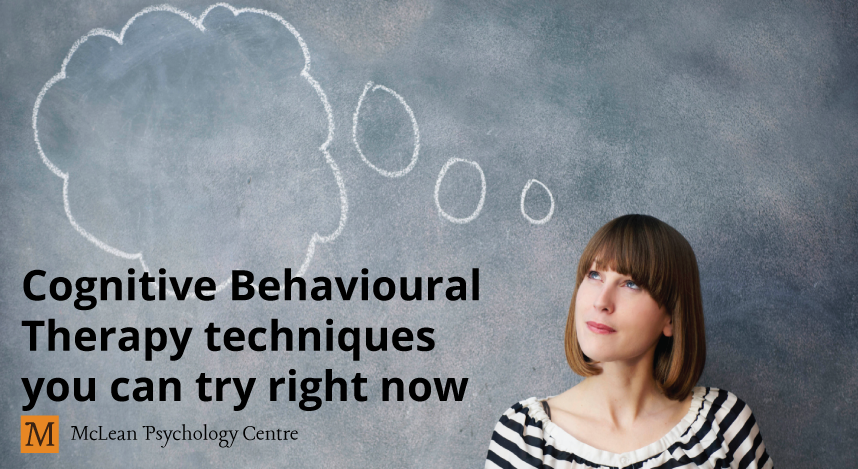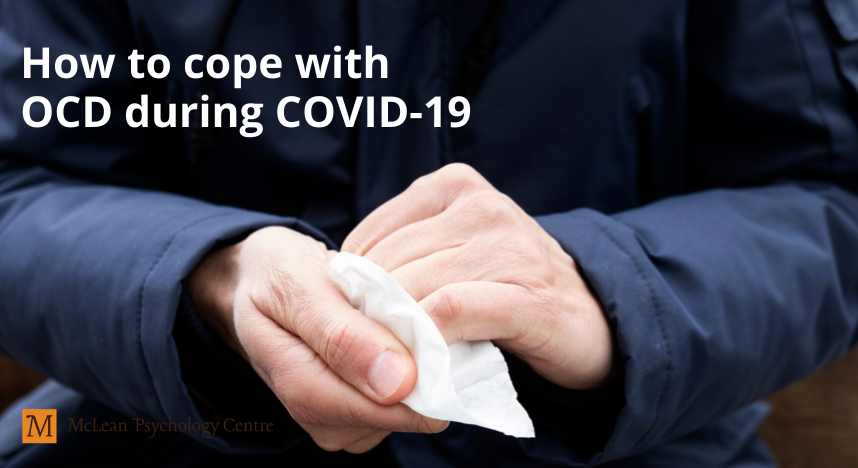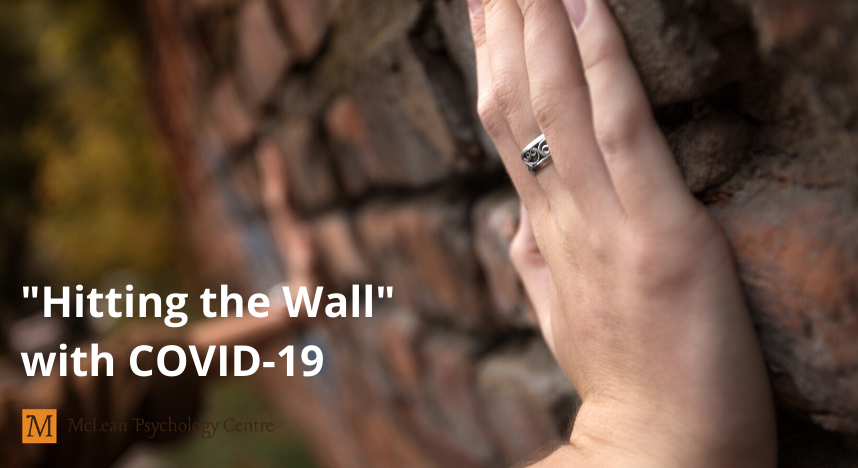We’ve all heard the adage “you are what you eat”, but in Cognitive Behavioural Therapy (CBT) you are what you think. Cognitive Behavioural Therapy is a form of psychological therapy that is based on the idea that a person’s mood is directly related to their thoughts. In CBT, psychologists believe that dysfunctional thinking patterns can have a negative effect on they way they see the world and themselves, which will effect their behaviour and self-worth.
CBT uses structured techniques to help you manage your thoughts and find new ways of thinking, which can be very helpful in the treatment of depression and anxiety.
Therapy with a psychologist who uses Cognitive Behavioural Therapy is an excellent way to treat life stress, depression, and anxiety, but there are some CBT techniques you can do on your own.
Keep a Thought Record
A thought record is a kind of behavioural experiment to test how true – or valid – your thoughts are. In this experiment you would reflect on the validity of a thought and determine if it is true, false, or somewhere in between.
For example, if you received negative feedback on a project at work you might think, “My coworkers think I’m terrible at my job.” You would write this thought down in your thought record and then begin to look at “evidence” that proves or disproves it. If you remember that just yesterday your coworker Jane told you that she really liked brainstorming with you because you have great ideas, you would put that in the “disprove” column. Normally, you might dismiss compliments as, “They’re just being nice,” rather than use them in a logical, evidenced based manner like this.
Looking at your thoughts objectively can help you talk your way out of a negative thought pattern and will teach you to evaluate your thoughts more objectively. More objective assessment of your thoughts leads to better, healthier and more accurate assessment of yourself, others and situations.
Write Self-Statements to Combat Negative Thinking
We live in a very happiness-focused society, so sometimes the key to recovering from depression is simply to re-frame our thoughts into something less black and white. When you find yourself thinking, “I am so depressed”, you might open up your notebook and write something like, “Everyone has good and bad days, and I do, too.” This keeps you from going to the opposite extreme of replacing the thought with “I am so happy”, which doesn’t acknowledge that everyone has struggles they face every day.
Catch, Challenge, and Change
Catch your negative thoughts as soon as you can. Learning to recognize them is a valuable tool in making positive changes to your mood.
Challenge your negative thoughts in a way that is similar to the technique noted in keeping a thought record. Do you know that your thought is true? Are you thinking in extremes? Are you feeling angry/sad because something “should” be a certain way? Do you feel that something isn’t fair? Would a good friend think these same thoughts were true of you or your situation?
Change the thought pattern by substituting your black and white thinking with something a little closer to shades of grey. Insert rational statements, and ask yourself if what you’re thinking is true and can be objectively supported with facts.
These CBT techniques can help you start changing your thinking patterns, which can have a huge impact on how you feel about yourself and your life.
If you feel that you would like to take advantage of McLean Psychology Centre’s therapy options that may include Cognitive Behavioural Therapy, booking a consultation is the first step.
See more posts about Cognitive Behavioural Therapy.







